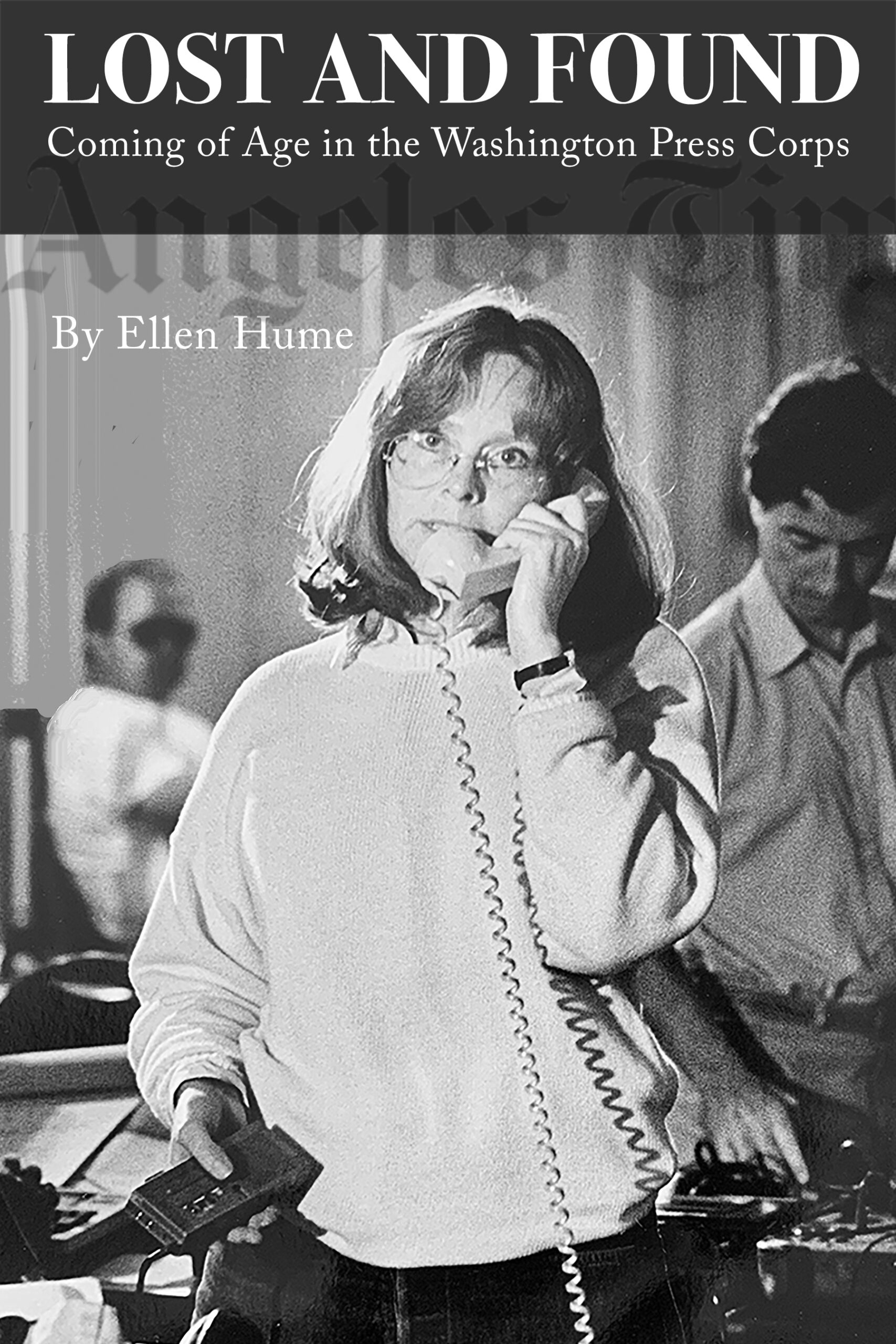
Fun and Games in the Washington Press Corps

You can order it from your independent bookstore, from Amazon.com, or from Bookbaby…


You can order it from your independent bookstore, from Amazon.com, or from Bookbaby…

I’m happy to see this new initiative that helps us identify the real journalists who offer trusted work, with accountability. Now we need to get more media literacy, so consumers will know to use tools like this Transparency Tracker to select reality-based, fact-based journalism providers instead of falling prey to the propagandists, newsbots and conspiracy theorists who are making money or gaining power by duping us into spreading and believing stuff that isn’t true.
Most importantly, tools like this confirm that some content is much more trustworthy than other content You CAN figure out what is useful news from what is propaganda. Don’t be left powerless by cynicism that tells you everything is a scam. If you decide that, you will never be able to hold the bad guys to account.
Journalism has never been, and will never be, perfect. But it is a tragedy when people don’t understand who is working in the public interest, to help empower them with information, versus all those jerks who are trying to sell them something for their own amusement or ill-gotten gains.

Living in the heart of darkness (Silicon Valley) for the past three months has taught me that we cannot pin our hopes for American democracy on the great media platforms: Facebook, Google, Twitter, YouTube, et. al. Their leaders seem to know only how to make money from us, and the tools they have invented are out of control. The companies are proving incapable of dealing with the information dystopia they have created. Digital innocents think they are accessing an agnostic information universe when they click onto these platforms. Instead, we are getting the content most likely to confirm our prejudices, based on all the private information we have shared through our online search, posting, shopping and “like” histories.
Mark Zuckerberg is the man in the hot seat, forced to defend the tech platforms’ vampire business model to Congress. People are just beginning to wake up to the problems generated by these data-sucking companies. Facebook now has 2 billion members around the world, whose private preferences are the “product” Facebook has given to any “advertiser” that comes along. Because they know so much about us, Facebook’s clients–malicious Russian robots and conspiracy theorists included–can figure out exactly how to win our trust. Analysts who know Facebook intimately, including Kara Swisher of RECODE and Farhad Manooj of the New York Times, confirm that Zuckerberg and his peers have no idea how to deal with, or even measure, the profound social and political impacts they have unleashed.
Google, which has the most data of all, has done a marginally better job of weaning its search engine off robotic conspiracy theories. But it has failed to care much about the fake news and hate speech its subsidiary, YouTube, turns up as preferred content.
Belatedly, as the techlash gains force, some folks in Silicon Valley are thinking about software solutions. Below is one look at whether the algorithms that got us into so much trouble can reverse course, and nurture our better natures. This depends entirely on the values and priorities of the people writing the code for it. Given the track record so far, this is not reassuring. We need laws that companies must follow. This requires government policies, demanded by media literate citizens using their real intelligence.
I don’t think that ceding more power to algorithms is the best solution. It may be part of the response, but it can’t be the whole story. I like the idea floated by Markos Kounalakis: create a Mayor of Facebook. Create accountability through human, democratic systems, so that people can help other people when they are doxxed, their identities are stolen, and their safety is compromised by viral hate videos. Here is Markos’s brilliant idea:
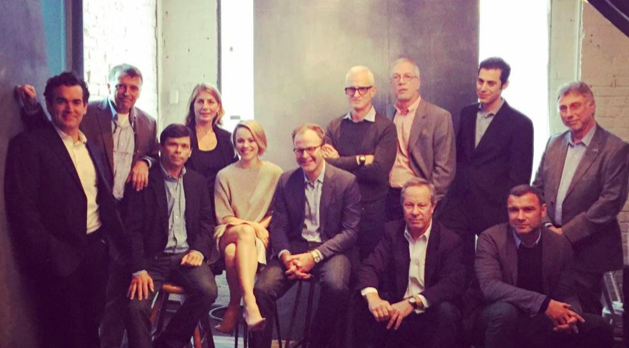
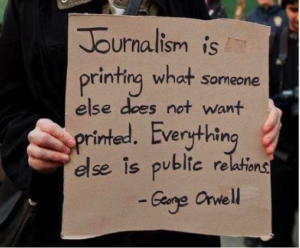
Thus the Herald would have its special edition on the streets well before the Times, grabbing that day’s audience and therefore, more money from street sales. Advertisers would be happy to have more eyeballs for their wares.
The story may be apocryphal—it was told to me when I was working the night shift at the Los Angeles Times in the 1970s. But it certainly illustrates how competitive journalists have always been with each other. Dedicated to that tradition myself, I confess that I carried a special lock in my purse to lock up the rotary dial on the pay phone outside the Sheriff’s office, so I could scoop my colleagues during the sensational Chowchilla kidnapping case in 1976.
Those days are long gone, not just because there are cell phones now. The business model for journalism is famously broken because everyone can be a journalist, using the Internet and mobile apps to broadcast their stories. How many people notice who publishes the story first? What matters now is who gets to attach advertising to it, and how popular it is with viewers who might be halfway across the world.
FIRST: THE BAD NEWS
New models are emerging. Huffington Post was built by taking other people’s content, repackaging it as a news feed, and selling ads for itself on that package of freeloaded content. (Facebook and Google do this better than any news organization; tailoring ads to each user with automated data gathering and pairing software.) It’s a miracle now if anyone is ever held accountable for whether a story’s content is true or not. A story that is passed around on social media is unmoored from its origins, its time and place. You can’t go down to the Internet’s headquarters and demand a correction. Have we reached the point yet, with the Comet Ping Pong Pizza shooting, that we are finally ready to instill media literacy at all levels of our educational curriculum?
The problem is that fake news is almost always more interesting than real news. Jim Rutenberg of the NYT calls for “some sort of hyperfactual counterinsurgency that treats every false meme as a baby Hitler to be killed in its crib with irrefutable facts.”
Facebook is working with fact checking organizations like PolitiFact to make it easy to mark articles as “suspect” before they are reposted, after a study showed that more fake news than real news was shared among Facebook users. Google says it is going to cut off known purveyors of fake news (like The Angry Patriot) from using their advertising network tools.
This could help, since Google and Facebook are the biggest publishing platforms today. They get 85% of every online advertising dollar, and most of the fake new producers are spreading it as clickbait for money.
To be absolutely clear: Fake news is not the same as biased or sloppy journalism, it is something entirely different. It is propaganda that wants to sell you something, without regard to whether it is true. Journalism is something quite different.
Media analyst Tom Rosenstiel asserts that we have reached a new level with the elevation of Breitbart’s Bannon and the Russian propaganda of the 2016 election. Rosenstiel says: “The goal of fake news is not to make people believe the lie. It is to make them doubt all news.”
How can we get back to having facts matter? We all know journalists in a democracy actually have a serious job to do– in between the body-in-gravel-pit stories.
Someone needs to hold the powerful accountable, and while citizen journalism has become very important, our news flow needs to be less random than the videos people take with their cellphones when something happens nearby.
When the digital revolution hit, journalists were already losing their mojo. The Kennedy School’s Tom Patterson has mapped for years how the negativity of journalism norms has turned off voters. What journalists have done to destroy their own credibility is a whole separate blog for another day. I have been writing for the past 25 years about this.
ATTACKS ON “THE MEDIA”
The enabling environment for journalism– to speak truth to power–has been disappearing. The elite media have been weakened by their own arrogance, insularity and imperfections. But do not underestimate the power of anti-media campaigns by Nixon’s clever media consigliore Roger Ailes, who reinvented propaganda as “news” on Fox, along with Reagan’s Mike Deaver and Pat Buchanan, and George W. Bush’s Karl Rove. And now President Trump and his minions declare that the news media are the “enemies of the American people.”
Alas, too many Americans believe them. Part of this is a lack of understanding of who the “media” are—from the New York Times to the gutter lies of Breitbart. There is almost universal public cynicism now about the motives of journalists, without an understanding of how real journalists work, and why. For every “Spotlight” there has been an “Absence of Malice” portraying journalists as immoral hacks.
It hasn’t just been the Republicans who have found it convenient to undermine the critical press. There were also constant attacks from the left by Noam Chomsky and others, who made careers out of denigrating journalism as capitalist propaganda. Chomsky has no idea of how journalists actually do their work—I doubt he has ever spent any time watching what happens in an American newsroom. But he has a global following for his critique, fitting into preconceived prejudices just like the Alt-Right.
Traditional journalism culture dictated that journalists weren’t supposed to be the story. So there has been no journalism p.r. campaign to counteract these negative narratives, as they gained traction from Nixon to Chomsky and Trump. Ever since the 1980s, it has been fashionable to blame “the media” for virtually everything.
What should journalists do now? How can they present serious news about climate change, and other contentious issues, when they’re competing with comedians and Macedonian fake news bloggers and a combative, tweeting President who holds them captive with every single news cycle?
The Internet may have ruined journalism’s business model and empowered fake news, but is also making possible some exciting new watchdog capacities. I am not arguing that this will solve all of the media’s problems–but I do think there is hope.
Let’s talk about the most important, expensive, controversial and difficult form of journalism. investigative journalism. Real investigative journalism isn’t about listening to police radios and racing to the gravel pit. If you saw Spotlight, about the Boston Globe’s investigation of the Catholic Church’s hidden sex scandal, you know how time consuming, expensive and difficult it can be.
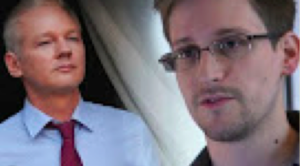
To be clear: Julian Assange, Chelsea Manning and Edward Snowden are not journalists. But leaks from people like them are the raw material, one of the things an investigative journalist might start with. Everything has to be checked out, especially if it’s coming from Assange.
AND FINALLY: THE GOOD NEWS
Today’s investigative journalists are using sophisticated data analysis tools and drones to document things like the destruction and capture of public lands in the rain forests of South America. Increasingly, these journalists must be skilled in data crunching and forensic Internet exploration. Not only do we have these massive leaks–made possible by digital technologies–but we now have crowd-sourcing, which invites the public to join the hunt.
David Fahrenthold of the Washington Post provides a great example of how this works. His investigative journalism coup was possible only because of the new collaborative journalism in place today.
Farenthold got a tip at 10 a.m. one morning that there was a portrait of then GOP candidate Donald Trump, paid for by the Trump Foundation, hanging in one of Trump’s luxury resorts. He used Google to figure out what the portrait looked like, and then asked his Twitter followers if they knew where the picture might be. By 8 p.m., one of Fahrenthold’s Miami followers found the portrait among 385 guest photos posted on the TripAdvisor page for Trump’s Doral Country Club in Miami.
But Fahrentold needed to confirm the portrait, which the Trump Foundation had bought for $10,000, was still there. He asked his Twitter followers to help. Enrique Acevedo, a Univision anchor in Miami, booked into a room at the Doral club after finishing work at midnight. He wandered the grounds, asking housekeeping and maintenance crews if they had seen it. They led him into the club’s Champions Bar and Grill, where Acevedo found the portrait, took a picture and tweeted it to Fahrenthold.
Farenthold told Terry Gross on NPR’s “Fresh Air,” “Unless the Champions Bar and Grill was used as a soup kitchen in its off hours” the Trump Foundation and Trump’s Doral Club had violated the law.
While President Trump hasn’t paid a political price yet for Fahrenthold’s expose, The Washington Post reporter’s work is only a small part of what is happening out there with investigative journalism.
Until recently, there were essentially three models of investigative journalism:
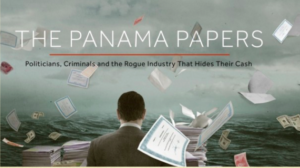
Obermayer realized he couldn’t even begin go through all these documents himself. It included the records of 214,000 offshore companies, the names of real owners, and passport scans. There were bank statements and email chains.
The illegal activities hidden in these documents seemed to involve powerful people in many countries. So Obermayer contacted the International Center for Investigative Journalism in Washington. They assembled a global team that eventually swelled to 400 investigative journalists from 70 countries, all working secretly on the Panama Papers data, with an agreed simultaneous publication date a year later–in April 2016.
In addition to being a team of sometime rivals, this journalism network was remarkable because it was decentralized, rather than controlled in a single place by a single news organization. (Alas, ISIS also seems to work this way.) With Panama Papers, everyone published their own stories in their own publications, using their own resources and editing practices, but with the same Panama Papers logo, and at the same time.
A NEW COLLABORATIVE CULTURE
What this kind of networked undertaking requires was a new journalism culture, a collaborative model. It is the opposite of that 1940s race to the farmhouse, where a rival cut the phone cord to weaken his colleague. Collaboration—not competition– might be the key to the future of journalism in the Trump era.
To do the Panama Papers project, the International Center for Investigative Journalism developed new digital tools. They created their own private Facebook-like social network platform called iHub where participating journalists could all look at the data, discuss it and share new information in a protected, encrypted, members-only space. They adapted the dating app Tinder…to help journalists select which reporting partners they were willing to work with.
Third, they used library software, so the reporters could easily search for names, countries, etc. To access the material, they had security measures like phone authenticators that generated a new code every 30 seconds.
The human social factors in this project were as important—maybe more important—than the technical tools. ICIJ was able to find reporters from far-flung places, who decided to trust each other, because they met at annual face-to-face training conferences in places like Rio de Janeiro, Kathmandu and Lillehammer.
IMPACT
During Watergate, The Washington Post languished alone its reporting for weeks before other media picked it up and amplified it at the national level. And that was during the golden age of media power in the US:
Today’s collaborative, network model is more powerful in several ways:
—It creates more security for the reporters, since everyone is reporting the same thing. As one veteran journalist said, with the new networked model, “If you kill one of us, 40 will take our place. If you kill 40 of us, 400 will take our place.” And it also creates local impact! By being published simultaneously all over the world under one big umbrella title, the local Panama Papers exposes couldn’t be ignored as easily at home.
—The Panama Papers project exposed the offshore holdings involving people in 200 countries, including 12 current and former world leaders.
—It revealed how associates of Russian President Vladimir Putin secretly shuffled as much as $2 billion through banks and shadow companies. He called the expose “a western spy plot.”
—U.K. leader David Cameron had urged his country’s overseas territories — including the British Virgin Islands — to work with him in 2013 to fight against tax evasion and offshore secrecy. It turned out his late father Ian Cameron, a wealthy stockbroker, was a Mossack Fonseca client who used the law firm to shield his investment fund, from U.K. taxes.
As a result of the Panama Papers scandal five European nations have now agreed to share tax and law enforcement data. The agreement includes the United Kingdom, Germany, France, Italy and Spain.
The Panama Papers documents continue to be used for new stories all the time, and new data dumps are engaging some parts of the team. Perhaps Trump will show up in some of these new documents.
WHAT IT TAKES
The new model is powerful, but it does cost money. So far, these nonprofit investigative journalism ventures are funded by local philanthropies and global foundations like Soros, Ford, Omidyar, Gates and others, along with wealthy individuals like the Sandlers in the USA, who established ProPublica.
Prof. Hamilton estimates that every $1 spent on investigative journalism in the US nets about $100 in public goods. Some of us are working on the idea of an international trust fund, run by journalists and scholars, which would use some of the funds recovered– thanks to the journalists’ corruption investigations–to finance new journalism projects. Such a qui tam fund exists to reward lawyers who recover money for the US government under the Federal Foreign Tort Claims Act. They get a percentage of the proceeds. I won’t dwell on the complications of setting this up to ensure it doesn’t skew and bias the journalism. But it is one of the things we are looking at.
LESSONS LEARNED
So what lessons can we take from this Panama Papers network model to help the journalists covering the Trump Administration?
And it would help if journalists apply the Panama Papers’ collaborative culture to their work in the United States.
Bastian Obermayer, the German reporter who first got the Panama Papers leak, has this advice for American journalists:
—“A new level of solidarity and cooperation is needed among the fourth estate. American journalists should stop Trump from dividing their ranks, ” he says.
The next time Trump or his surrogates single out any reporter, or don’t answer a question, “the next reporter who’s allowed to speak should simply repeat the question of the journalist that Trump has snubbed,” Obermayer says. If Trump snubs this second reporter, the next one called on should continue to repeat the original question that the Trump Administration has refused to answer.
Obermayer even suggests that a news organization with a scoop should join forces with rival publications to find missing pieces of the puzzle. “It has always been the noblest job of the journalist to check the power of the government, the center of power. This seems even more important as the president acts like one of the oligarchs that journalists, like us, investigate,” he says. Obermayer concludes that since Trump has decided to go down this hostile path, “it is time for us (journalists) to change our path too. That’s no only fair—it is absolutely necessary.”
*This post is adapted from my February 2017 presentation to the American Academy of Arts and Sciences, and my recent evaluation of the Global Investigative Journalism Network (GIJN) for the Adessium Foundation. I would like to thank especially David Kaplan, Anya Schiffrin, Ethan Zuckerman, James Hamilton, Tom Rosenstiel, Brant Houston and Bruce Shapiro for educating me about the new world of networked investigative journalism.

This was the question we were chewing over at Gerbaud’s legendary Budapest patisserie yesterday. I was with two of the most experienced and creative thinkers about global media: Rosental Alves of the University of Texas, who knows everyone and everything about Latin America journalism, and Behrouz Afagh, head of the BBC’s Asia and Pacific news coverage. The day before, we had all heard a terrific idea from Fred Ritchin, the USA dean of news photographers, now a New York University photography professor because he left as photo head of the New York Times in 1982.
Here is Fred’s idea: when you digitally publish a serious news photo you imbed a link on the left corner of the image, that when moused over, shows a “before” image taken of the same subject just before the selected image, and in the right top corner, a link that shows an “after” shot taken just after the main image. It’s a way of seeing whether the selected image was constructed or was actually taken–as authentic photojournalism is supposed to be– from a real flow of action. This process itself could be faked, of course, as can almost everything now. But there would be a low incentive to fake these contextualizing “before” and “after” shots, since the point is that they would be voluntarily included by those who are trying to hold themselves accountable to a professional standard of veracity.
This kind of device, which unfortunately didn’t capture the imagination of our colleague Ethan Zuckerman at the MIT Media lab when we posed it to him as something we would like to see his designers create, is related to my own long-fantasized authentication tool. I would like a tool that would enable those who want to be held to a veracity standard (a “Good Housekeeping Seal of Approval.”) 
Of course, those doing risky communication would forgo using this history bug, in order not to be tracked down. This is sort of the opposite of Tor. (All tools can be used for evil. That doesn’t mean we should shy away from creating new tools.)
For those who are working hard to offer or find verified, authenticated facts and images, this little bug could offer a missing accountability factor. If people understand where a story (or image) comes from, they might know more about what credibility to give it. It could be introduced on a voluntary basis by the purveyors whose vetting is considered essential to their brand (New York Times, BBC.) This wouldn’t solve all the problems of critically evaluating the flow of content, but it would give us a tool we could sorely use.
If you add another feature—an automated or nonautomated micropayment feature that is tied to the authentification—then you might just have an interesting tool that would not only help people figure out what to take seriously, but would pay for this higher veracity stuff, supporting the often expensive production of investigative journalism and other hard-to-get vetted and contextualized news items.
Anyone like/hate these ideas? Your feedback is awaited.
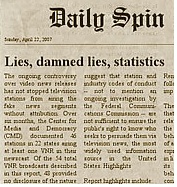
Journalism will survive, but it might appear in the form of Web sites designed for people who want to check in on the real news when they don’t get the jokes on the Jon Stewart’s “Daily Show.”
It is tragic that we’ve come to this. For years we’ve been warned that great journalism is being tainted by all this ersatz stuff. Too many reporters are chasing too few stories and conveying them with more hype than meaning. People are suffering from news fatigue, along with compassion and political fatigue.
Audiences flee to the blogosphere and talk shows, where the chatterati seem more candid and therefore, honest, seducing audiences by confirming their prejudices. The passion for “attitude” plays well in our attention economy, but it’s bad for news. Journalists become no different than salesmen and jesters, except they’re usually less amusing.
Real journalism will recover, but only if its supporters take action. First, they should get out the plastic sheeting and duct tape and wall off everything about celebrities, movies, Laci Peterson, rumor, prediction, and a lot of other popular stuff. Take a page out of factcheck.org – the most admired Web site of this campaign year. Stay with the basics. Don’t just repeat someone else’s story. Do original reporting. Help us understand what’s a lie and what’s the truth, and why this matters.
Journalism that still tries to do this is better now than ever. It is found in the detailed take-outs in The New York Times and other newspapers which separate myths from realities, about aluminum tubes in Iraq, John Kerry and George Bush during the Vietnam era, and other hotly debated issues. But these days this kind of careful, researched journalism has more enemies than friends. “You’re either for us or against us,” President Bush declared after 9/11, in message that was absorbed too well by the U.S. media.
To win back people who want to know what’s really going on, journalists need to return to what they do best: providing verified information that is, in Bill Kovach’s and Tom Rosenstiel’s phrase, “comprehensive and proportionate.” News outlets also need to get more credit when they do this; even their best work is often taken for granted by those who pay close attention or dismissed by those who do not.
It’s time to launch a public education campaign and take back the phrases “fair and balanced, and “no spin” from those who claim them, but do just the opposite. Journalism doesn’t need to give up and join the overtly biased. Instead, it needs:
It’s way overdue to use these tools to reverse the 35-year cultural war against the mainstream media, led by folks like Roger Ailes on the right and Noam Chomsky on the left. These critics, who never appreciated the honest efforts of good journalists, exaggerate and exploit high-profile mistakes by major news organizations. When the federal government, which rarely finds scrutiny convenient, subpoenas reporters to hand over telephone records that go far beyond the scope of the Valerie Plame inquiry, a lot more lawyers are needed. When reporters can’t protect sources, they can’t hold the powerful accountable.
Fortunately, a long-needed media consumer movement is gaining momentum. Organized through the Internet, people successfully challenged Sinclair Broadcast Group’s decision to provide blatantly erroneous, partisan content during the president election. Before that they forced the Federal Communications Commission to rollback its loosening of cross-ownership rules. Journalism companies should get on the right side of this issue, even though the business model for independent journalism is under severe stress.
The rise of factcheck.org is evidence that journalism can morph into new formats and succeed at its core task of holding the powerful accountable and providing access for citizens to information they need. But it’s a nonprofit operation. Most journalism cannot enjoy that protection. Mainstream journalists often confront market-driven executives who demand cross-promotion of entertainment products by their news divisions. Niche markets might be journalism’s best hope, as National Public Radio illustrates, even if news balkanization is not good for democracy. Better business models must be found, fast.
Finally, a return to a civic education curriculum would help. Those who teach media literacy should move beyond deconstructing messages to helping students find reliable information. They need to show how to value real journalism – by looking for transparency, verification, independence, context and proportionality. Let’s be sure that when the audience comes back to look for this, they’ll be able to find it.